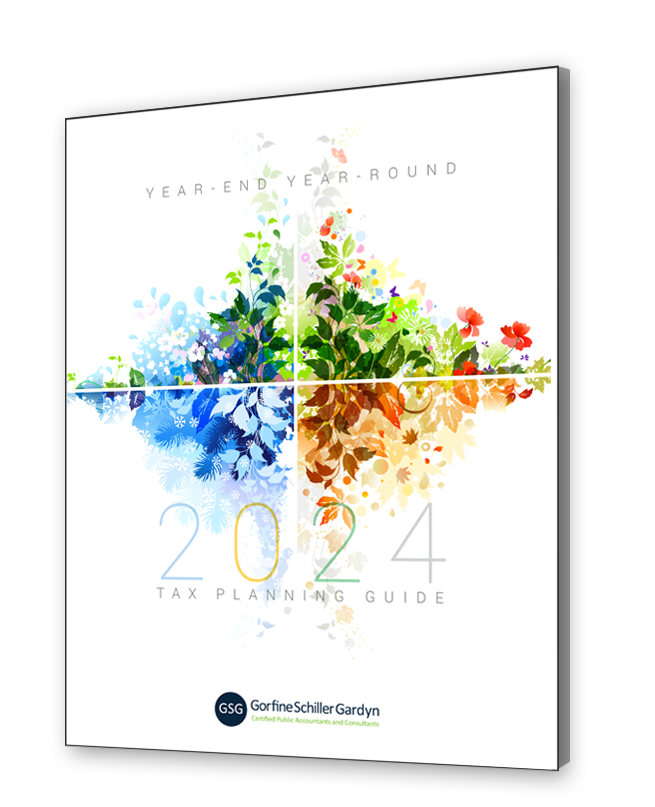
Key changes under the new tax reform act for businesses and individuals.
The Tax Cuts and Jobs Act (TCJA) will generate the most significant tax changes in three decades. Signed into law on December 22, 2017, the TCJA implements many changes affecting both individuals and businesses, starting in 2018. The following blog post highlights the major impacts for businesses and individuals under the new TCJA.
Changes for Businesses
Corporate Tax Cut
Previously, C corporations paid graduated federal income tax rates of 15%, 25%, 34% and 35% on taxable income over $10 million, while personal service corporations (PSCs) paid a flat 35% rate. The TCJA establishes a flat 21% corporate rate – the reduced rate also applying to PSCs.
Corporate Alternative Minimum Tax (AMT)
The TCJA repealed the corporate AMT, eliminating a prior 20% rate.
Capital Asset Expensing & Depreciation Provisions
Businesses will be able to deduct more for capital expenditures within their first year. In some instances, businesses may depreciate remaining amounts over a briefer time-frame due to two key tax breaks:
1. Section 179 deductions: The maximum Section 179 deduction increases to $1 million for qualifying property placed in service in tax years beginning after December 31, 2017. This expands from $510,000 for tax years beginning in 2017. The Section 179 deduction phase-out threshold rises to $2.5 million, an increase from $2.03 million for tax years beginning in 2017. The TCJA also expands the definition of eligible property, which now includes certain depreciable tangible personal property used to furnish lodging. This also includes roofs, HVAC equipment, fire protection, alarm systems, and security systems for nonresidential real property.
2. First-year bonus depreciation: The first-year bonus depreciation percentage increases to 100%. This applies to both new and used property placed in service from September 28, 2017 – December 31, 2022.
Business Vehicle Deduction
New or used passenger vehicles placed in service after December 31, 2017 with over 50% use for business, have a maximum annual depreciation deduction of the following:
- First year – $10,000
- Second year – $16,000
- Third year – $9,600
- Fourth year and beyond – $5,760
Business Entertainment & Employee Fringe Benefits
Deductions for business-related entertainment expenses are disallowed for amounts paid or incurred after December 31, 2017. However, meals purchased while traveling on business continue to be 50% deductible. In addition, meals provided at an employer’s cafeteria are now 50% deductible.
The TCJA also disallows employer deductions for the cost of stipulating employee-commuting transportation, unless the transportation is required for an employee’s safety. Deductions by employers are eliminated for the cost of providing qualified employee transportation fringe benefits, including parking stipends, mass transit passes, and van pooling. However, those benefits are still tax-free to the recipient employees.
Cash Method Accounting
The new law relaxes eligibility requirements for electing the more-flexible cash method of accounting, allowing that method to be attainable for more medium-size businesses. Eligible businesses are also exempt from inventory accounting for tax purposes.
Net Operating Losses (NOLs)
The maximum amount of taxable income for a year offset with NOL deductions is mostly reduced from 100% to 80% – for NOLs in tax years ending after December 31, 2017. NOLs also incurred in those years are no longer carried back to an earlier tax year (excluding select farming losses). Affected NOLs are carried forward indefinitely.
Like-Kind Exchanges
IRC Section 1031 rules for tax-deferred exchanges of appreciated like-kind property are only allowed for real estate for exchanges completed after December 31, 2017. Like-kind exchanges of personal property assets are not permitted.
Domestic Production Activities Deduction (DPAD)
The DPAD, which could be up to 9% of eligible income, is eliminated starting in 2018.
Pass-Through Businesses
Tax years beginning in 2018 have a new deduction based on a non-corporate owner’s share of a pass-through entity’s qualified business income (QBI), which is also offered to eligible individuals, estates and trusts. The deduction equals 20% of QBI, subject to restrictions that can apply at higher income levels.
The QBI deduction is not allowed when calculating the non-corporate owner’s adjusted gross income (AGI), but it reduces taxable income. It is treated the same as an allowable itemized deduction.
Limitation on W-2 Wages
In general, the QBI deduction cannot exceed the greater of the non-corporate owner’s share of:
- 50% of the amount of W-2 wages paid to employees by the qualified business during the tax year
- The sum of 25% of W-2 wages plus 2.5% of the cost of qualified property
Qualified property is defined as depreciable tangible property, including real estate, owned by a qualified business as of the tax year end and used by the business at any point during the tax year for the production of QBI.
The limitation does not apply until an individual owner’s taxable income exceeds $157,500, $315,000 for married individuals filing jointly. Above those income levels, the limitation is phased in over a $50,000 range or over a $100,000 range for married individuals filing jointly.
Limitation on Service Business Income
The QBI deduction is not available for income from specified service businesses, such as most professional practices if the individual owner’s taxable income exceeds $157,500 or $315,000 for a married individual who files jointly. Above those income levels, the service business limitation is phased in over a $50,000 range or over a $100,000 range for married joint-filers.
Changes for Individuals
Income Tax Brackets
The TCJA preserves seven brackets, but at reduced rates. The highest tax bracket drops to 37% from 39.6%. The individual income brackets increase to expose more income to lower rates.
Standard Deductions
The standard deduction nearly doubles to $12,000 for single filers and $24,000 for married individuals filing jointly. Personal exemptions and most additional standard deductions are suspended in order to cover the cost.
Itemized Deductions
The following itemized deductions are limited or no longer available:
- State and local tax deductions are limited to $10,000 total for all property, income and sales taxes.
- For new acquisition indebtedness, mortgage interest will be deductible on indebtedness of no more than $750,000. Existing mortgages are unaffected by the new cap as the new limits go into place for acquisition indebtedness after December 14, 2017. The TCJA also suspends the deductibility of interest on home equity debt.
- Deductions are now available only for federally declared disaster areas.
- All miscellaneous deductions subject to the 2% of adjusted gross income threshold are eliminated.
Child Tax Credit
The child tax credit increases from $1,000 to $2,000 with $1,400 refundable – even if no tax is owed. The phase-out threshold increases from $110,000 to $400,000 for joint filers, growing its availability to taxpayers. Dependents ineligible for the child tax credit can qualify for a new $500-per-person family tax credit.
529 Education Savings Plans
Qualified distributions from 529 education savings plans expand, now including tuition payments for students in K-12 private schools.
Estate Tax Exemption
The estate tax exemption doubles to $11.2 million ($22.4 million for married couples).
Kiddie Tax
The “kiddie tax” on children’s unearned income will use the estates and trusts tax rate structure, and will be taxed anywhere from 10% to 37%.
Healthcare Individual Mandate Penalty
The individual mandate penalty in the Affordable Care Act (also known as “Obamacare”) is suspended. The penalty is set to zero starting in 2019 but remains in place for 2018 and prior years.
What Stays the Same for Individuals?
- Itemized charitable deductions
- Itemized medical expense deductions
- Deduction threshold drops back to 7.5% of adjusted gross income for 2017 and 2018
- Reverts to 10% in the following years
- Some above-the-line deductions
- $250 of educator expenses
- $2,500 of qualified student loan interest
- Gift tax exclusion
- Increases to $15,000 from $14,000 for 2018
If you have any questions about how the Tax Cuts and Jobs Act affects you or your business, please contact our tax professionals today.
Newsletter Sign Up
Tax Planning Guide
Recent Blog Posts










